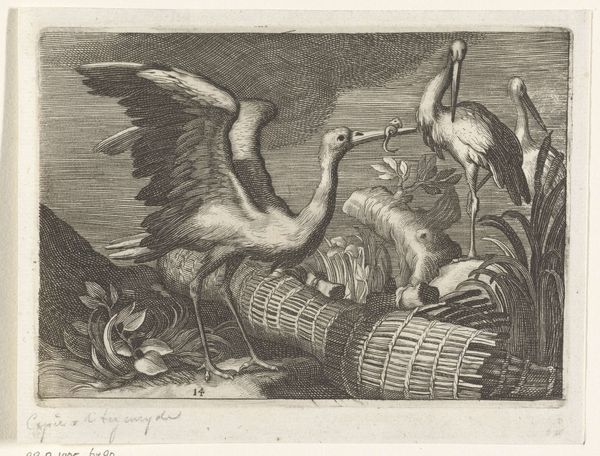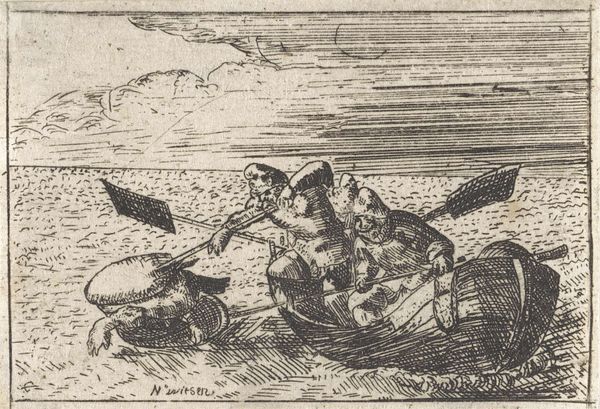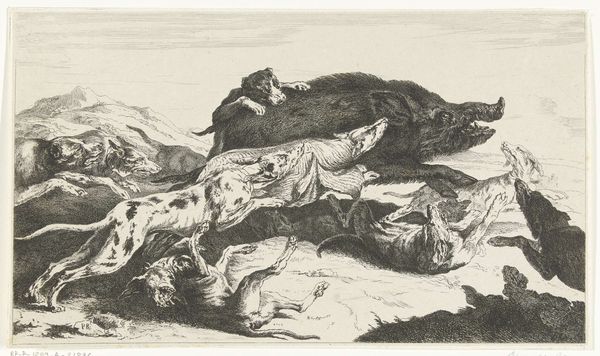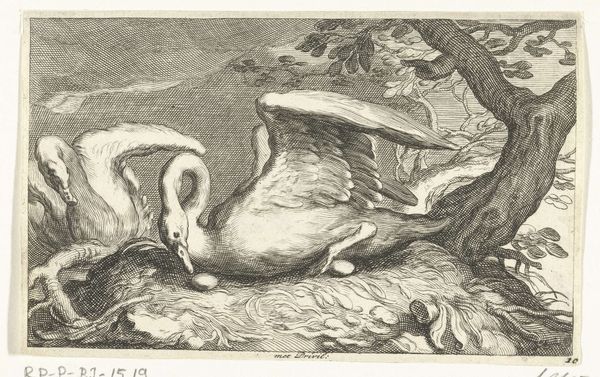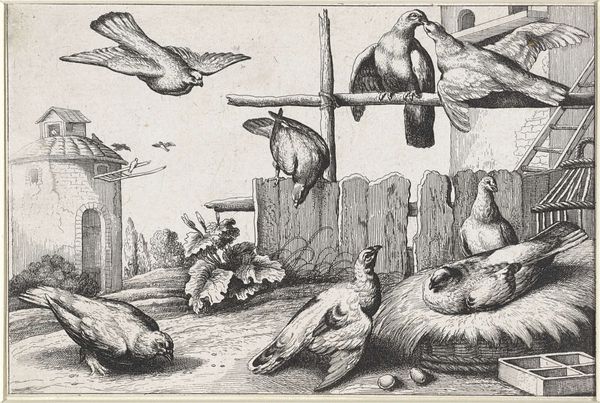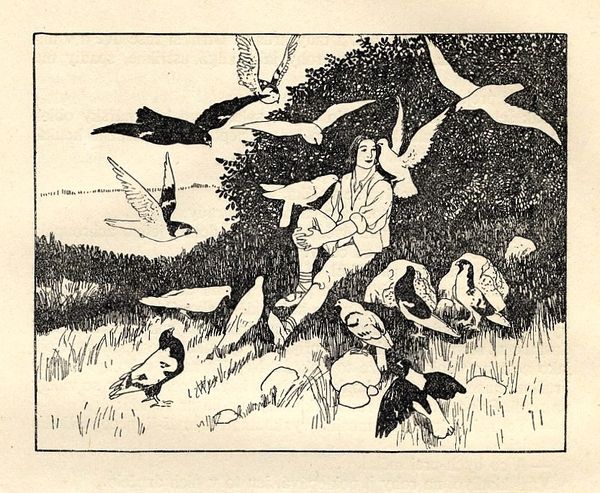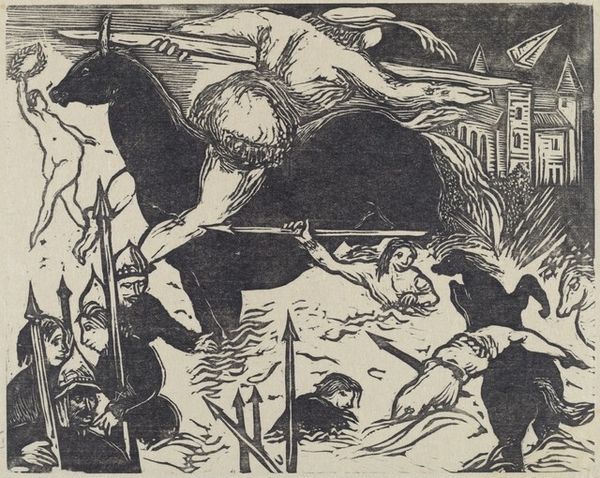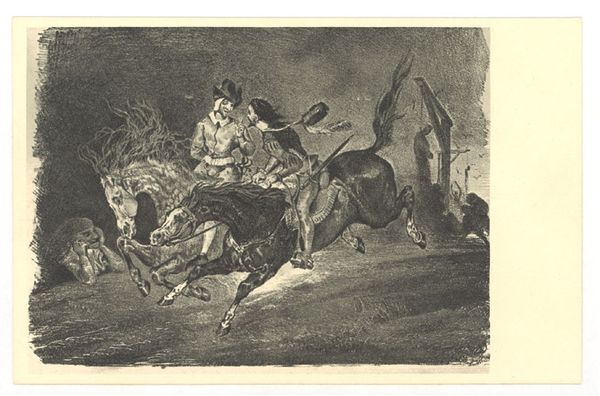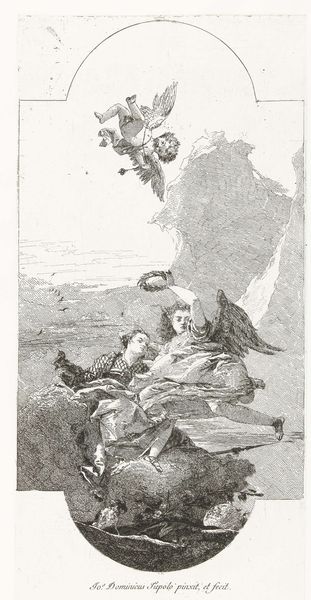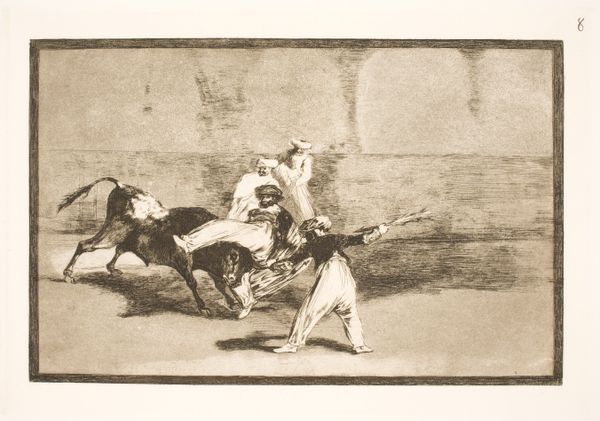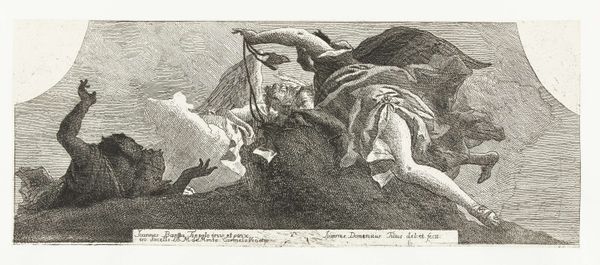
print, etching
#
baroque
# print
#
etching
#
figuration
#
history-painting
Dimensions: height 143 mm, width 350 mm
Copyright: Rijks Museum: Open Domain
Editor: Here we have Giovanni Domenico Tiepolo’s "Vallende man wordt opgevangen door engel met scapulier," an etching from sometime between 1742 and 1746. The composition is so dramatic. It’s got such a chaotic and active energy to it, a really baroque sensibility. How do you interpret its social and political relevance within that period? Curator: Well, consider the public role of prints during the Baroque period. This etching, intended for circulation, participates in a broader system of religious imagery. What might the depiction of an angel rescuing a falling man communicate to its contemporary audience within the context of 18th century Italian society? Editor: Maybe it served as a form of reassurance. Life was undoubtedly challenging, and religious imagery could have offered a sense of hope or divine intervention. Do you think this piece specifically reflects any contemporary issues? Curator: Precisely! Religious prints reinforced specific beliefs and social order. The presence of the scapular, a devotional object, suggests the work may promote devotion to a particular religious order or belief system. The Church was a central societal and political figure. In terms of its reception, the politics of imagery would have held great weight. To whom was it speaking and on behalf of what social values? Editor: So it's not just art for art's sake; it's actively shaping and reinforcing societal values? That changes how I view the piece entirely. Curator: Indeed. This image actively engages in the politics of its time. And, consider how museums today choose to display works like this. Editor: I'm thinking about the responsibilities of showing a work like this today... Curator: Exactly! We are also participating in this history as well as how our museums perpetuate certain readings of history. Editor: Understanding the layers of how it was used, produced and understood really adds to the narrative being told within the lines of the piece! Curator: It's those contextual factors that really help us understand the true nature of an artwork, even centuries later!
Comments
No comments
Be the first to comment and join the conversation on the ultimate creative platform.
